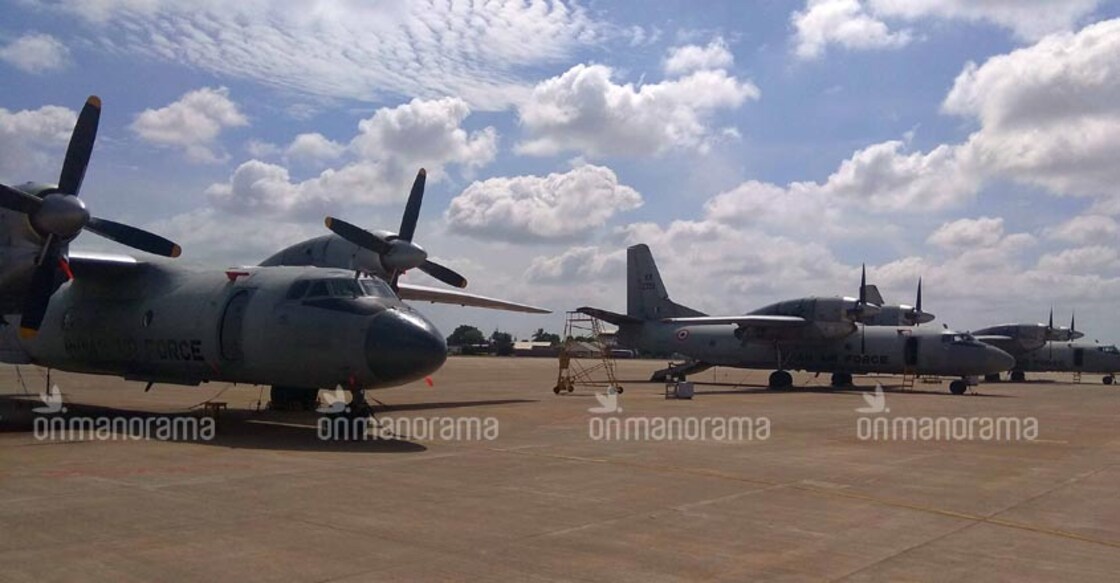Two years on, no clue about missing IAF AN-32

Mail This Article
Bengaluru: The mystery around the fate of an Indian Air Force (IAF) Antonov transport aircraft, which vanished over the Bay of Bengal exactly two years ago, continues.
On board the twin-engine turboprop transport aircraft were 29 people, including six crew members; they included 11 personnel from the IAF; eight defence civilians, six crew members, two from the Indian Army and one each from the Indian Navy and the Indian Coast Guard. Among them, two were Keralites- Vimal of Kozhikode's Makkada and Kakkoor native Sajeev Kumar. Vimal was a lance naik with Army's military engineering department. Sajeev Kumar was a petty officer.
Headed to Port Blair in the Andaman and Nicobar islands from Air Force Station at Tambaram in Chennai, the air traffic controllers lost the radar contact with the AN-32, when it was approximately 280 km east off Chennai.
The Maritime Rescue and Coordination Centre situated in Chennai had then reported that the pilot wanted a deviation from the set flight path to steer clear of a thundershower cloud in sight. The plane, then flying at 23,000 feet, disappeared soon after this last radio contact.
The transport plane was expected to land at Port Blair at 11.30 am after it took off at 8.30 am – a normal routine to the workhorse of IAF. However, within 45 minutes into take-off, the plane went of the radar and still remains a mystery as to what would have happened to it. “The distance from AFS Tambaram to Port Blair Airport is 1,369 km which is normally covered by the AN-32 in three hours. It still remains a mystery to all of us what had really happened,” says an IAF official. The plan can fly non-stop for four hours.
Massive search mission
In one of the massive SAR (Search and Rescue) operations ever launched in the history of IAF, best resources were summoned to trace the missing plane and the people onboard. As per the SOP (standard operating procedure), SAR mission was launched within an hour of the plane went missing.
Indian Navy, Indian Coast Guard, National Institute of Ocean Technology and private agency vessels continued their efforts for many months. In September 2016, the IAF informed the families of all the 29 personnel on board about the very slim chances of finding anyone alive. This, the IAF said, was part of its procedure so that the compensation process is speeded up. Sunday marks the second anniversary of that tragic day.
The AN-32s were first inducted into the IAF in 1984 and ever since remained as a trusted flying machine undertaking numerous missions. In addition to the AN-32s, IL-76, C-130J Super Hercules, C-17 Globemaster are been doing transport duties for the IAF.
Tribute to the missing
During a recent visit to AFS Sulur, Onmanorama interacted with the officers of 33 Sqn Soaring Storks flying the AN-32s. The squadron houses 10 AN-32s that has been flying for the last 34 years.
The missing AN-32 (K-2743) was part of the 33 Sqn and the crew members were: Fl Lt Puspendar Badsara, Fg Offr Pankaj Kumar Nandal, Fl Lt Kunal Barpatte, WO Rajeev Ranjan, Cpl Gurdyal Choudhary and LAC Kapil Kumar. A memorial has come up at AFS Sulur to pay respects to the martyred air warriors.

“It is a huge loss for all of us and we have had very close relationship with the crew members. But IAF has taught us to move on picking up lessons from such incidents. It is still a mystery as to what would have happened to the plane. There are many theories, including whether the plane would have gone to unusual altitudes,” an officer told Onmanorama. He said in every loss, they learn lessons that would help them upgrade the performance parameters. “We try to set new standards to our performance cycle by improved training and research,” he added.
A remembrance service was held at the memorial at AFS Sulur on Sunday with the officers and airmen joining to offer their prayers to the departed friends.
Post incident, the IAF has fitted all AN-32s flying over the seas with ULBs (Underwater Location Beakers), an equipment critical for the SAR team to track the whereabouts of the plane, in case of such eventualities.
Incidentally, a team of mountaineers discovered the frozen body of a soldier and parts of an AN-12 wreckage in Himachal Pradesh’s Spiti Valley on Saturday. The wreckage is suspected to be that of an IAF’s AN-12 that went missing 50 years ago on February 7, 1968.
(The writer is an independent aerospace, defence journalist, who blogs at Tarmak007 and tweets @writetake.)
Read: Latest National News

